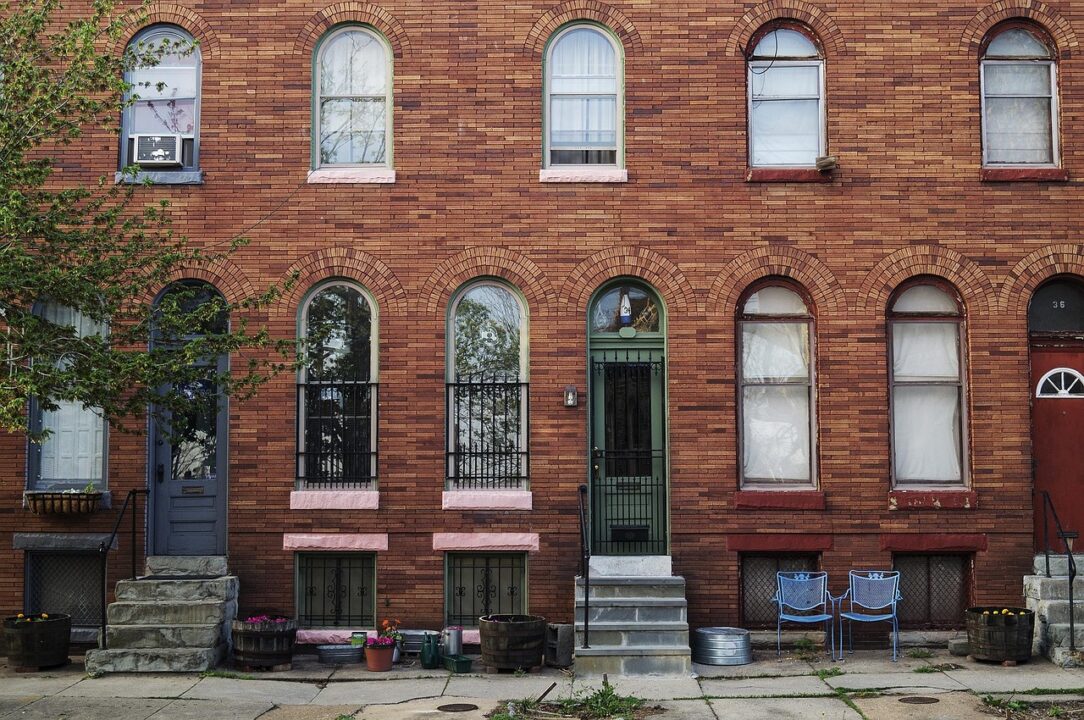The two catastrophic flash floods in Old Ellicott City made national headlines. One occurred in 2016, killing two people, and the second flood occurred two years later in 2018 resulting in one death. These floods caused devastation to the whole Ellicott City community. To protect the community, Howard County initiated a master planning process in 2017.
Now, six years later, those visiting or passing through Old Ellicott City will notice scaffolding, construction workers, closed sidewalks, and flaggers at the bottom part of Old Ellicott City Main Street. This is part of Howard County’s “Ellicott City Safe and Sound” initiative, meant to ensure the safety and well-being of its community members by implementing flood mitigation measures and minimizing future flood risks.
Part of the initiative includes partnering with masonry experts and architects to deconstruct four buildings that were once integral to Old Ellicott City located on Lower Main Street. This will widen the water channel that is under them, thus, moving gallons of water toward the Patapsco River, as opposed to accumulating and flooding the area. In place of these buildings will be an open area for visitors to unwind and relax.
Charlotte Nass, a Junior Public Health major at the University of Maryland, Baltimore County said that the deconstruction is bittersweet, “It’s kind of one of those tough situations because you don’t want to see any historical buildings taken away, but it’s a big liability for businesses down there.”
Nass’s older cousin owned an art gallery at the bottom of Main Street and that he was in the upstairs unit of the building when the first flood took place. Her cousin was, “videoing cars floating down the street and worried he was not able to get out of the flood…alive.”
After the second flood, Nass explained, “My cousin loved Old Ellicott City so much, and he tried to stay, but just could not. It was not realistic, and so he moved his studio to Baltimore.”
Small business owners on Main Street had been hit the hardest due to costly building repairs or lost merchandise from the floods. Many shop owners closed their shops permanently or moved their businesses elsewhere.
Kay Robbins and her husband own four residential and commercial buildings on Main Street. When the first flood occurred, Robbins said, “It is indescribable how horrible it was. Our basement had water up to thirteen feet deep, and it was jammed full of logs, sticks, and debris up to the ceiling. Everything we had was covered in black sewage water and nothing could be saved.” Then, Robbins described the second flood as “Soul-crushing. This was supposed to be a thousand-year flood. No one had any money or resources left.”
Robbins shared her gratitude for the Federal Emergency Management Agency and Small Business Administration for helping the business owners on Main Street, if not for them, they would have gone bankrupt.
The deconstruction of these buildings stirred mixed feelings, Robbins said, “You don’t want to see any part of the historical fabric of the town being demolished.” However, she is happy for the sacrifice because it will protect all the business owners who have high stakes in this.
Robbins concluded by stating how overdevelopment has significantly contributed to these floods by tearing down lush forests in place for shops and parking lots. She said, “Corporations are all making profits, but mitigation and risks are on individuals and the county. We’re paying the price, we’re in debt.”
Now, while many business owners and community members have shown their resiliency, it is only a matter of time before Old Ellicott City gets hit by another flood. The “Ellicott City Safe and Sound” initiative hopes to not only protect the livelihood of the community from future floods but also allow those to heal and move forward from these tragic events.
Olivia LaMonte is a Senior Sociology major and a Probationary writer for News at The Retriever.
Contact Olivia at olamont1@umbc.edu



